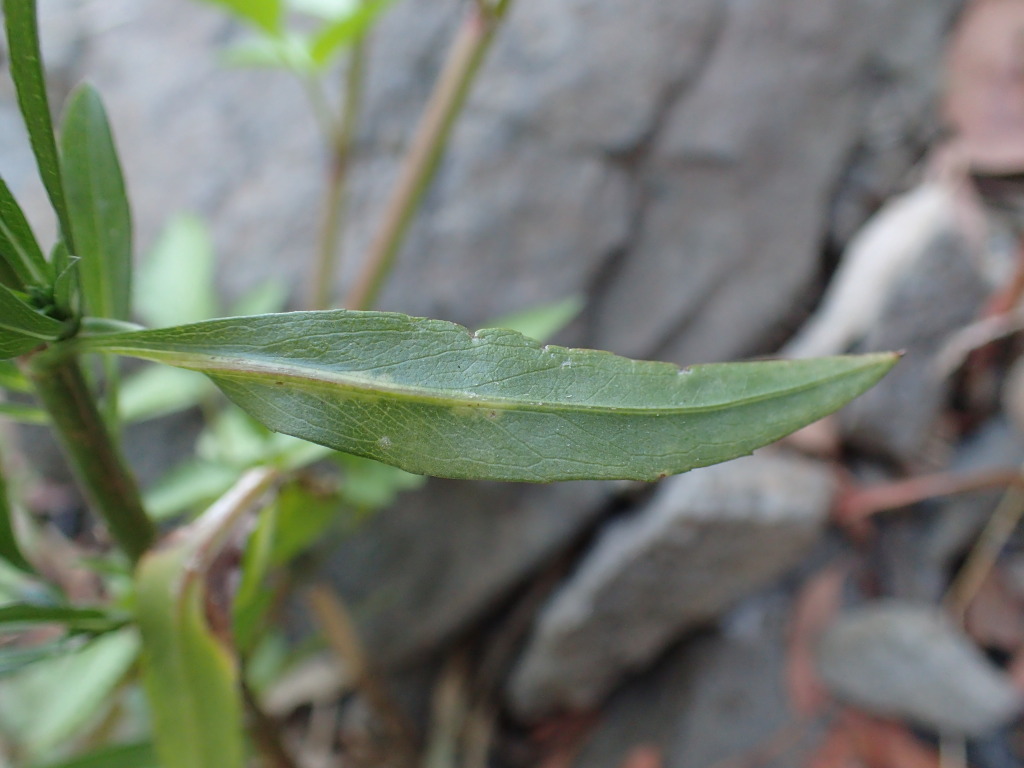Symphyotrichum
NeesAnnual or perennial, rosette to erect branching herbs. Leaves basal and cauline, alternate, entire to serrate. Inflorescence of solitary capitula or a raceme, corymb or panicle; capitula pedunculate, cylindric or campanulate to hemispherical; involucral bracts in 3–several series, herbaceous; receptacle flat to convex; outer florets female, in 1–few series, ligules usually prominent (only shortly exceeding involucre in Symphyotrichum subulatus), rarely absent, white, pink, blue or purple; inner florets tubular, bisexual, 5-lobed; anthers with narrow-triangular apical appendages; style branches narrow-linear with lanceolate appendages. Cypselas c. oblong, usually compressed, glabrous, strigose, eglandular or glandular; pappus of barbellate hairs in 1–3 rows.
About 90 species, native to east Eurasia, North and Central America, with most being from North America, 2 naturalized in Australia.
Previously included in Aster that is now primarily an Old World genus. Most of the North American species previously included in Aster are now Symphyotrichum, which has been shown by analyses of DNA data to be more closely related to several other North American genera, including some that have never been included within Aster, than they are to Aster s.str. (Noyes & Rieseberg 1999).
 Spinning
SpinningMisapplications
Noyes, R.D.; Rieseberg, L.H. (1999). ITS sequence data support a single origin for North American Astereae (Asteraceae) and reflect deep geographic divisions in Aster s.l . American Journal of Botany 86(3): 398–412.




